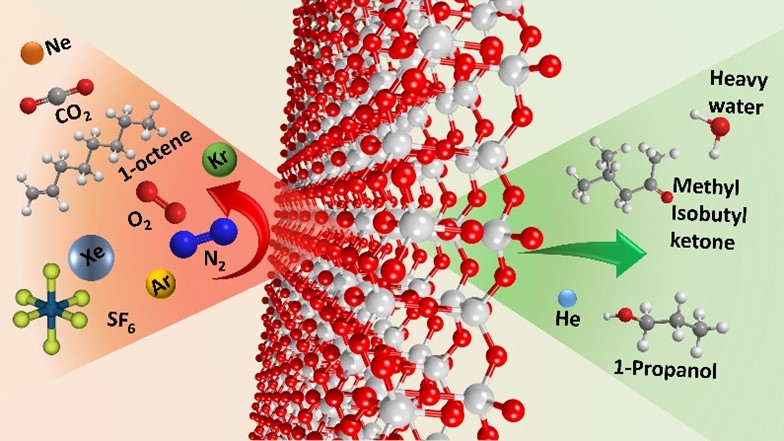- Ruhr-Universität Bochum

Sustainable 2D-Materials
The intriguing properties of the two-dimensional (2D) material graphene and the outstanding success in utilizing it in different technologies ranging from electronics, energy, membranes, biomedical, sensors etc. has aroused tremendous interest in exploring new era of 2D material systems for similar applications. Particularly the transition metal dichalcogenides (TMDCs) and recently extending to other layered and nonlayered material systems has caught the attention of the scientific community especially for sustainable energy storage and conversion. Membranes are very attractive for energy efficient separation and purification systems. They can impede movement of molecules or ions while letting others penetrate by forming a selective barrier. The current interest in membrane technology is to exploit its advantages such as simple operation, low energy consumption compared to conventional separation routes such as distillation and adsorption. 2D materials with atomic thinness can serve as new building blocks for fabricating ultrathin membranes possessing the ultimate permeation rate. Layers of two-dimensional (2D) silicon dioxide (SiO2) contains natural pores and can therefore be used like a sieve for molecules and ions. Scientists have been looking for such materials for a long time because they could for example help desalinate seawater and be used in new types of fuel cells.
When a 2D material is pierced with angstrom precision, the resulting nanopores can discriminate chemical species similar to a sieve. There have been many efforts to perforate the 2D material graphene but removing atoms from its crystal structure harms the mechanical stability and it is also hard to control the size of artificial pores. The researchers from Bochum, Bielefeld and Yale have recently studied the permeation of gases in two-dimensional silicon dioxide (2D-silicates) that has intrinsic lattice openings [1]. The 2D material was grown by Atomic Layer Deposition (ALD) on an inert gold surface and was subjected to a detailed spectroscopic and microscopic characterization. After optimizing the preparation conditions, the defect-free 2D membranes were sealed in a vacuum apparatus and probed with respect to the flow of gaseous molecules. It was found that free-standing 2D SiO2 enabled the passage of vapors like water and alcohols but stopped the atmospheric gases nitrogen and oxygen (Figure 1). The mechanism appeared to be affected much by nanoscale effects. This study sheds light on the mass transport properties of freestanding 2D SiO2 upon ALD to grow large-area films on Au/Mica substrates followed by transfer onto Si3N4 windows.
These results are exciting because 2D SiO2 has a high areal density of nanoscopic pores that is simply not possible in artificial 2D membranes. Unlike perforated graphene, the pores in 2D SiO2 are almost of the same size, and there are so many of them. It acts like a fine-mesh strainer for molecules. Although 2D silicon dioxide is known since 2010, the methodology to synthesize it has been limited in scale and costs. This study is anticipated to widely impact the materials research as such 2D materials with selective permeability are of enormous interest. However, before the 2D silica can be used in practice, it is important to evaluate exactly how many molecules can attach to the surface of the materials or how they can penetrate it, which is part of the ongoing research between the researchers at RUB, Bielefeld University and Yale University. As membranes are widely used in energy conversion and storage devices, such new 2D porous materials could be at the forefront of aiding sustainable development, for example in the field of energy conversion or storage. The inherent 2D SiO2 membranes can find further use in seawater desalination and mitigating the environmental problems.
